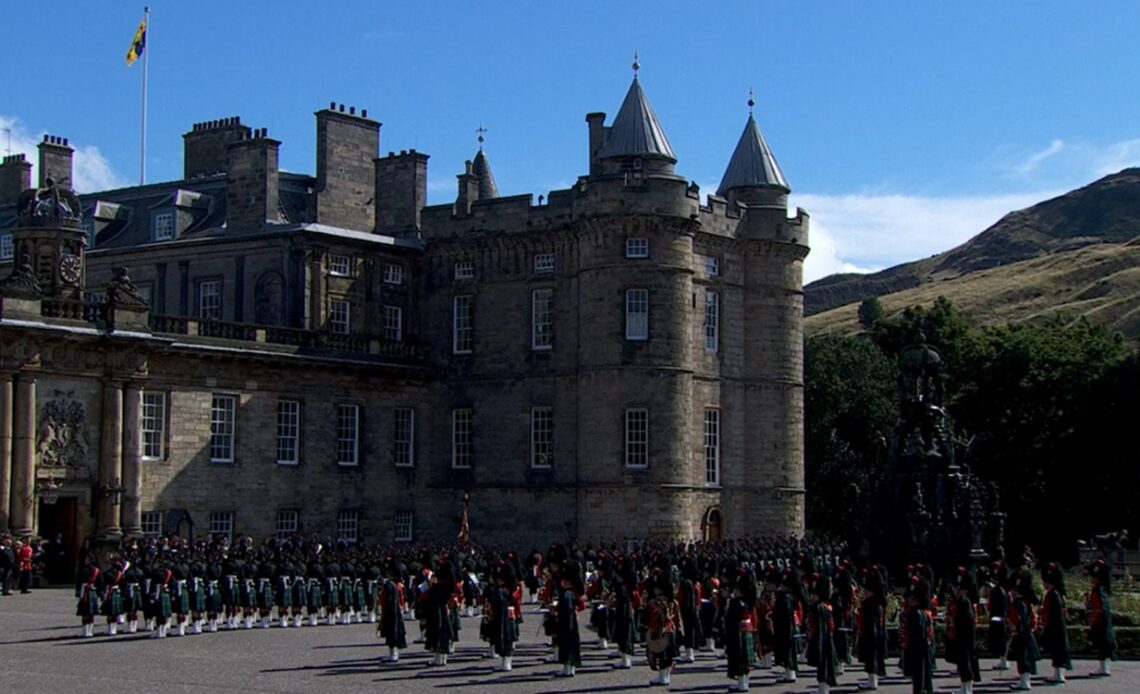
Queen Elizabeth II’s coffin was placed in State in the Throne Room at the Palace of Holyrood, in Edinburgh after being brought to the Scottish capital from Balmoral.
The Throne Room is very different from the one at Buckingham Palace, because it looks a lot simpler, and therefore more austere.
The walls are covered in dark wood paneling, with a red carpeted floor and white decorated ceilings, from which hangs the central chandelier. A smaller one floats over the two thrones, positioned in a nook at the centre of one of the short sides of the room.
More sconces are lined all along the wall, brightening up the room, which is located in the right wing of the Palace, close to the entrance.
The two thrones that give the room its name were commissioned by King George V in 1911, to commemorate the anniversary of his namesake predecessor, King George IV, who, in 1822, became the first British Monarch to visit Scotland in more than years.
A portrait of the Monarch on that occasion, painted by David Wilkie, can be seen in the Royal Dining Room. In it, King George IV is wearing a Royal Stewart tartan kilt, as well as all the traditional Highlands weaponry.
While the weaponry is no longer used, the tradition of wearing Scottish tartans when at Balmoral continues to this day. In fact, in her last public engagement, just two days before her passing, the late Queen was seen wearing a tartan skirt.
The Throne Room is currently used for “receptions and other State occasions”, according to the Royal Collection Trust’s website, and, when not in use, it is open to the public for viewing.
It was an annual tradition for Her Majesty to host at least one garden party in the Palace during Holyrood week, to allow the Scottish population and individuals who made significant contributions to the local communities to be recognised for their efforts.
Her late Majesty passed away last Thursday in Scotland. She was the first Monarch to die there since the 16th century – another record for a Sovereign who broke several.

